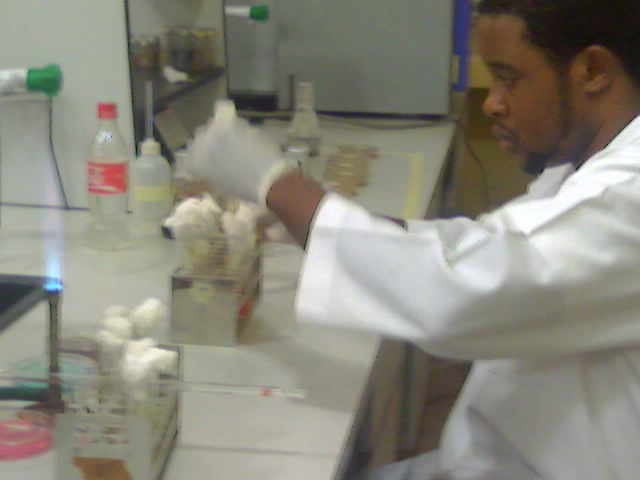The use of laboratory animals including mice, rats, rabbits and primates for scientific/biomedical research is guided by some principles and ethical guidelines that ensure the optimum care, protection and security of animals used in scientific investigations. Animal research is a very important procedure in biomedical research through which novel drugs are tested and scientific knowledge acquired and improved upon. It is important that researchers imbibe certain internationally accepted ethical guidelines in their use of animals for scientific investigations.
Russell and Birch in 1953 came up with some guiding principles known as the “3Rs”, and which should guide any clinical, scientific or biomedical research involving animals. According to Russell and Birch, the use of laboratory animals for research should be focused and result-oriented while bearing in mind some important factors to the benefit of the animals, humans and the environment. These factors include: ensuring best practices in the use of animals for scientific research and putting the animal’s wellbeing (health and feeding) into consideration before any other gain that accrue from the research.
The “3Rs” proposed by Russell and Birch in 1953 for the use of animals for scientific research is an internationally accepted laboratory guideline for animal research industry across the world, and it stands for: REDUCTION, REFINEMENT and REPLACEMENT.
- Reduction: Reduction involves the use of fewer animals for the undertaking of any laboratory research. It advocates for a reduction in the number of animals used for scientific research, and that more information (results) should be actualized by the use of lesser animals than being contemplated in any anticipated biomedical research that involves animals. The aim is to eliminate unwanted killings of animals for research, thus reducing the number of animals required to carry out a particular laboratory experiment. This principle encourages the development of novel laboratory methods or procedures such as cell culture and other in vitro techniques that require fewer animals for scientific/biomedical research.
- Refinement: Refinement involves the modification of already existing scientific research involving animals in order to reduce pain, stress and other discomforts experienced by the animal in the course of the laboratory procedure. It involves the use of techniques that reduce the invasiveness of animal’s bodies and other such methods that involves their timely killing for result taking. Refinement helps to ensure that animals meant for scientific research are adequately taken care of, fed, and treated humanely.
- Replacement: Replacement is the optimum guideline for scientific research because it encourages the development and use of procedures that does not involve animals. It involves the use of techniques such as cell culture, Limulus Amoebocyte Lysate (LAL), computer modeling, mathematical modeling, and other alternative high-tech immunoassay testing techniques that rules out the usage of laboratory animals. Replacement advocates a partial or a total exclusion of animals from laboratory research that will eventual cause pain, stress and death of laboratory animals.
References
Alberts B, Bray D, Johnson A, Lewis J, Raff M, Roberts K andWalter P (1998). Essential Cell Biology: An Introduction to the Molecular Biology of the Cell. Third edition. Garland Publishing Inc., New York.
Alberts B, Bray D, Lewis J, Raff M, Roberts K and Watson J.D (2002). The molecular Biology of the Cell. Fourth edition. New York, Garland, USA.
Ausubel, F.M., Brent, R., Kingston, R.E., Moore, D.D., Seidman, J.G., Smith, J.A., Struhl, K., eds (2002). Short Protocols in Molecular Biology, 5th edn. John Wiley & Sons, New York.
Caputo J.L (1996). Safety Procedures. In: Freshney, R.I., Freshney, M.G., eds., Culture of Immortalized Cells. New York, Wiley-Liss, Pp. 25-51.
Cooper G.M and Hausman R.E (2004). The cell: A Molecular Approach. Third edition. ASM Press.
Davis J.M (2002). Basic Cell Culture, A Practical Approach. Oxford University Press, Oxford, UK.
Freshney R.I (2005). Culture of Animal Cells, a Manual of Basic Technique, 5th Ed. Hoboken NJ, John Wiley and Sons Publishers.
Health Services Advisory Committee (HSAC) (2003). Safe Working and the Prevention of Infection in Clinical Laboratories. HSE Books: Sudbury
Lodish H, Berk A, Matsudaira P, Kaiser C.A, Kreiger M, Scott M.P, Zipursky S.L and Darnell J (2004). Molecular Cell Biology. Fifth edition. Scientific American Books, Freeman, New York, USA.
Marcovic O and Marcovic N (1998). Cell cross-contamination in cell cultures: the silent and neglected danger. In Vitro Cell Dev Biol. 34:108.
Mather J and Barnes D (1998). Animal cell culture methods, Methods in cell biology. 2rd eds, Academic press, San Diego.
Verma P.S and Agarwal V.K (2011). Cytology: Cell Biology and Molecular Biology. Fourth edition. S. Chand and Company Ltd, Ram Nagar, New Delhi, India.
Discover more from #1 Microbiology Resource Hub
Subscribe to get the latest posts to your email.



